Today, because I’m thinking about the always-inspiring work of Norah Gaughan, I thought I’d share an essay I originally wrote for our 10 Years in the Making Club about the simple pleasures of 2×2 cable crosses . . .
It was winter, and I was enjoying Philadelphia. I loved the city, its streets and people and I loved the library where I worked. I spent my days reading eighteenth-century letters, and my evenings knitting. At that time, I was mostly knitting hats, but then I saw the cover of Vogue Knitting in a bookstore, and became immediately obsessed with the cover pattern.
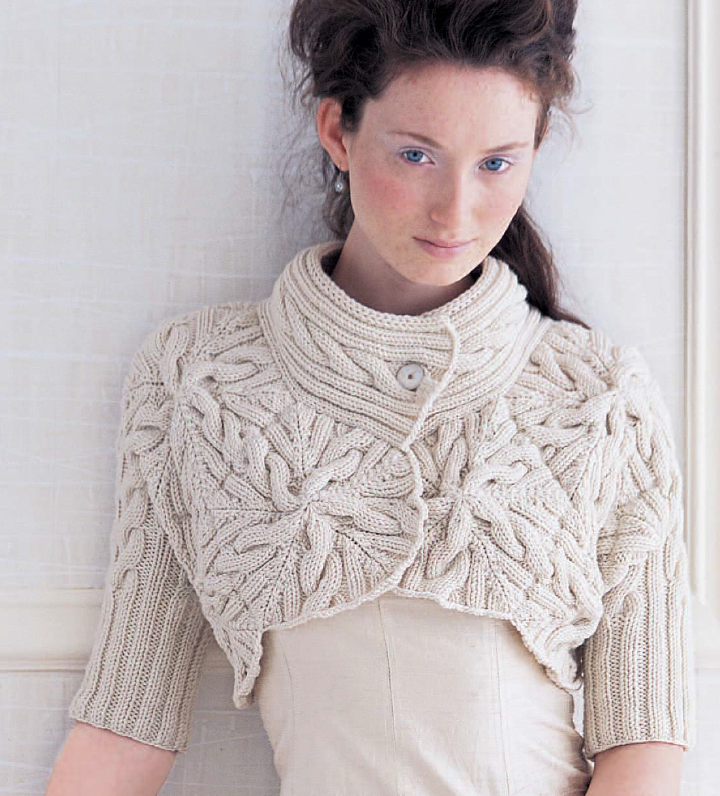
What was this thing? Not quite a jacket, nor quite a shrug, the magazine described it as a cabled bolero, while the designer, Norah Gaughan had dubbed it a capecho (a compound of caplet and bolero). Whatever the garment was, I’d never seen anything quite like it, and it immediately floored me. For, in this designer’s hands, cabled texture had become something remarkable: something vital, organic, and almost self-generating, something that grew and swirled about the model’s upper body like lichen on a rock. I had no idea that knitted fabric could be so structurally intriguing, so very elemental. But how were those undulating modules even formed? How did they shape themselves – thus – around the shoulders? How could knitting proceed – at it appeared to do in this design – in several ways at once? The more I looked at the design, the more that it intrigued me. I bought the magazine. This thing looked so unearthly, so intricate, so incredibly complex. I wasn’t even sure if I was up to it. But I loved it so. I had to knit it.
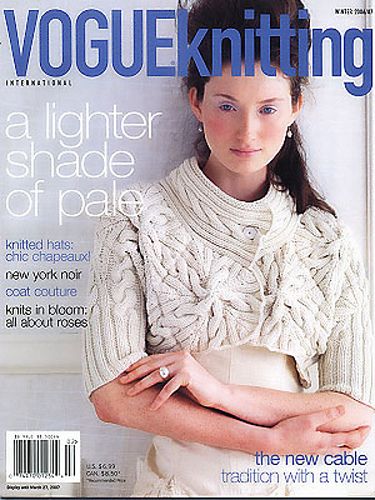
Back in my room above the library I opened the magazine, and scrutinised the pages with trepidation. The work proceeded as a series of modular pentagons, each of which was picked up and knitted on to the last, with sleeves and collar added at the end. I was struck again – as I had been when I first saw the magazine – by the obvious inventiveness and creativity of this designer, but, as I read through the pattern, something else began to strike me too.
It was so much simpler than I’d expected.
Could this be right?
Reading the pattern, I discovered that the fabric which appeared to be so complex, so intricately textured was, in fact, an easy combination of 2×2 rib and right-crossing cables. The designer had chosen a really straightforward 2×2 motif and, by just repeating it, twisting it, turning it, working it modularly, and joining it all together, had transformed a simple stitch into something truly captivating and kaleidoscopic. I felt a renewed sense of admiration for the designer – there was an impressive sort of chutzpah in this pattern’s transformation of the ordinary into the extraordinary – and I also suddenly felt up to the challenge of the design. Yes! I could knit this thing!
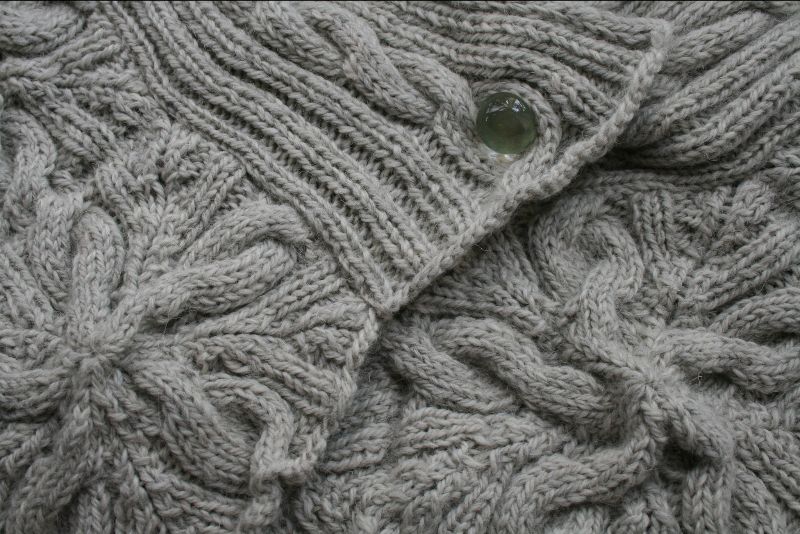
Norah Gaughan’s Capecho marked many firsts for me. It was the first garment I’d knitted for myself that became a conversation starter. Colleagues repeatedly remarked upon it, strangers stopped me in the street to ask about it. And once I started talking about it, I found it was quite hard to stop. For it was the first design that really made me think about the endless possibilities of garment construction, and about just how amazing knitting was at accommodating three dimensions. It was also the first thing I’d made in which I’d really felt that interesting connection between a knitter and a designer, which is so similar to that between an author and a reader. This design had been an idea in the mind of Norah Gaughan: an idea which was refreshed and realised anew each time a knitter made or modified it. Making it had granted me a particular kind of insight into someone else’s creative process: I suddenly understood how a design might emerge from an idea, and how fairly simple ideas might produce pretty remarkable objects.
This was the pattern that first showed me that, in knitting, you can very often do a lot more with less. And specifically, this was the pattern that suggested to me that there are many things that one might do on a ground of 2×2 rib with some simple cable crosses.
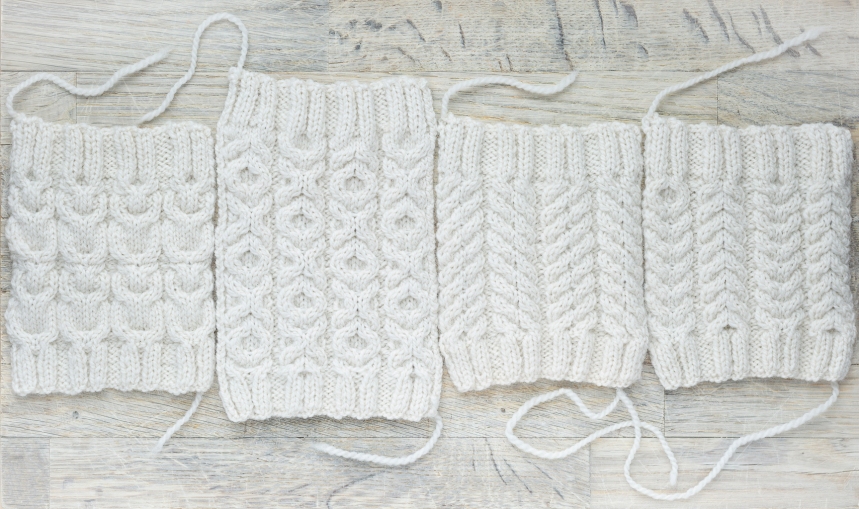
For the possibilities of simply twisting 2 stitches over 2 stitches, on a ground of 2×2 rib, are really pretty endless.
Placing 2 twists next to each other, for example, gives a tightly braided effect.
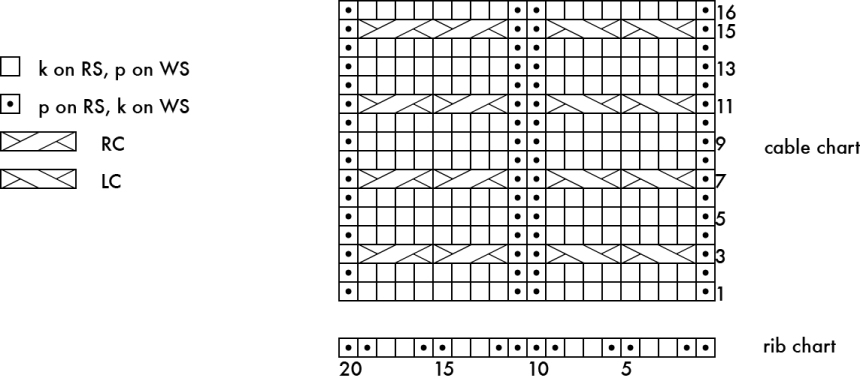
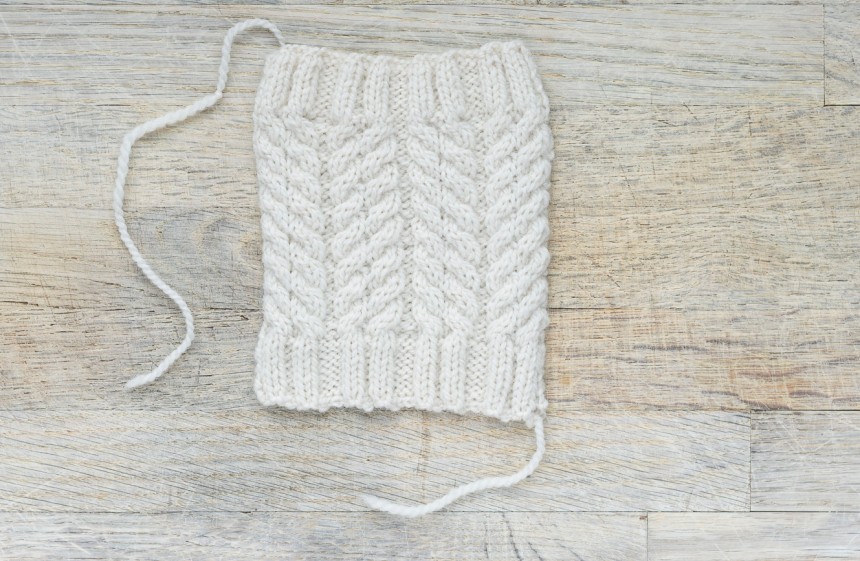
braid swatch
Changing the direction of the twists creates satisfying Vs . . .

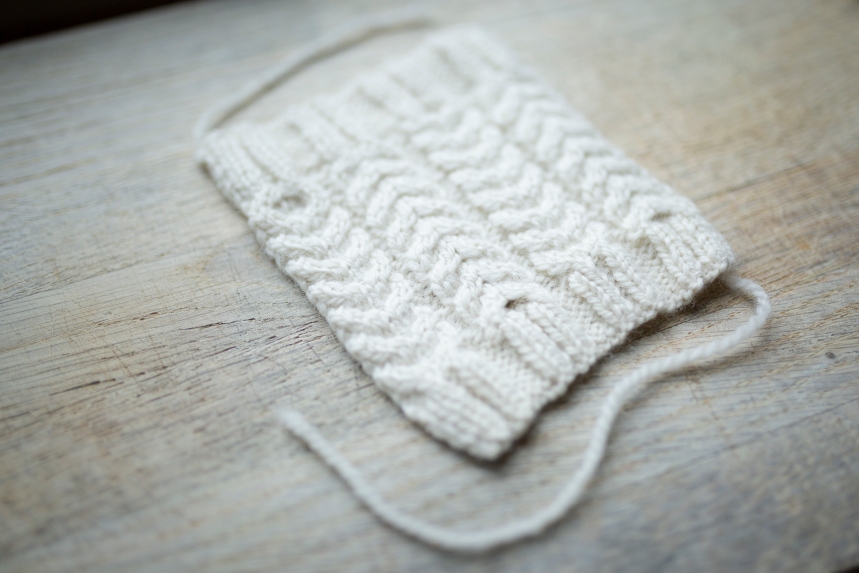
Inserting a few rows distance between the Vs gives you – owls!



And, with less rows between each alternating pair of twists, you end up with a neat structure of Os and X: that simple, ubiquitous pattern that is found in so many different contexts of knitting and weaving and which is shared by so many different textile traditions and cultures.
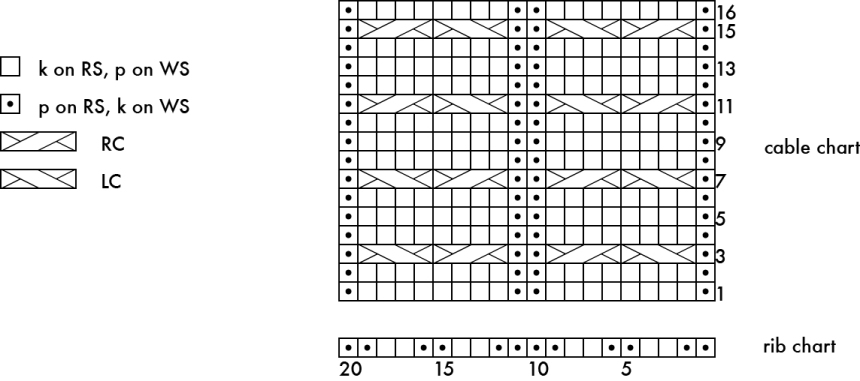
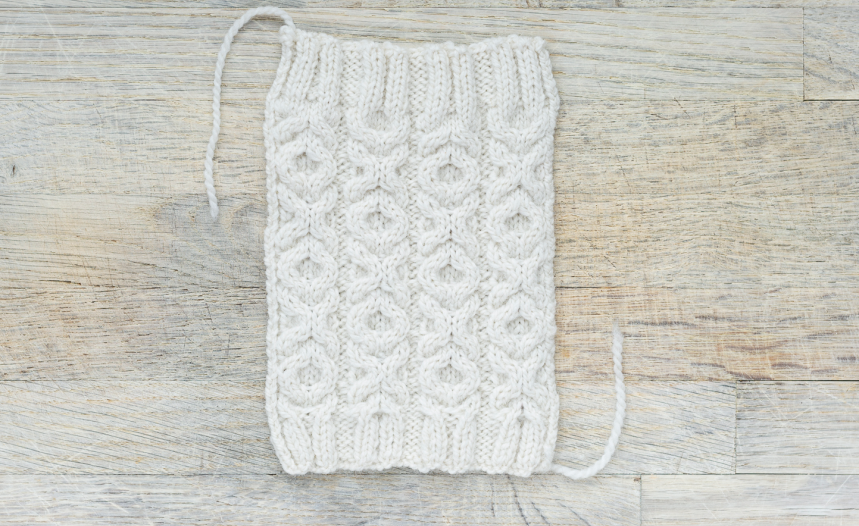
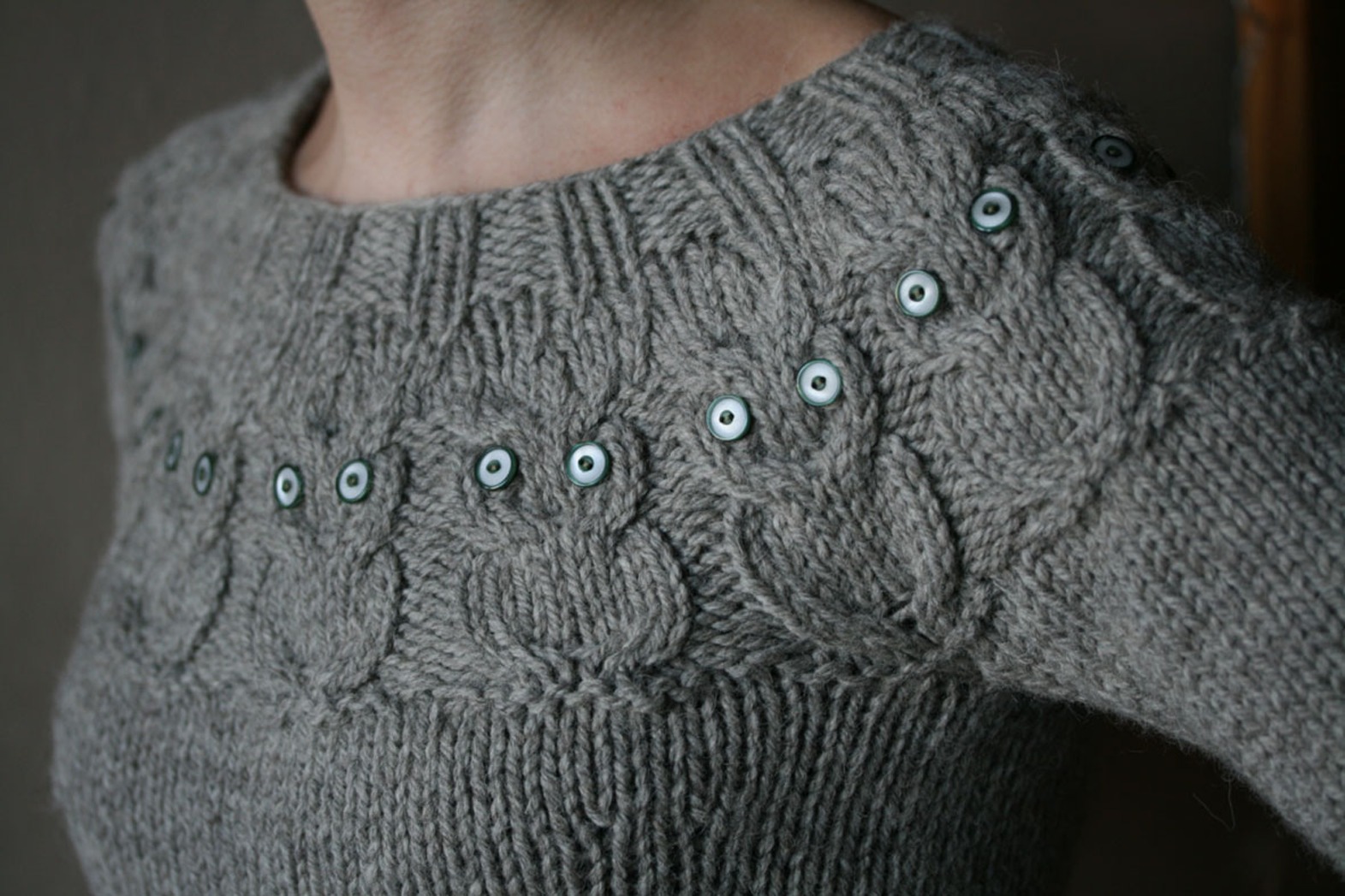
After my transformative experience of knitting Norah Gaughan’s capecho, I went on to feature 2×2 crosses in several designs, from the owl sweater to my more recent Tree Tram Tro slipover.

Sometimes all you need is 2 x 2.
Sometimes 2 x 2 is more than enough.
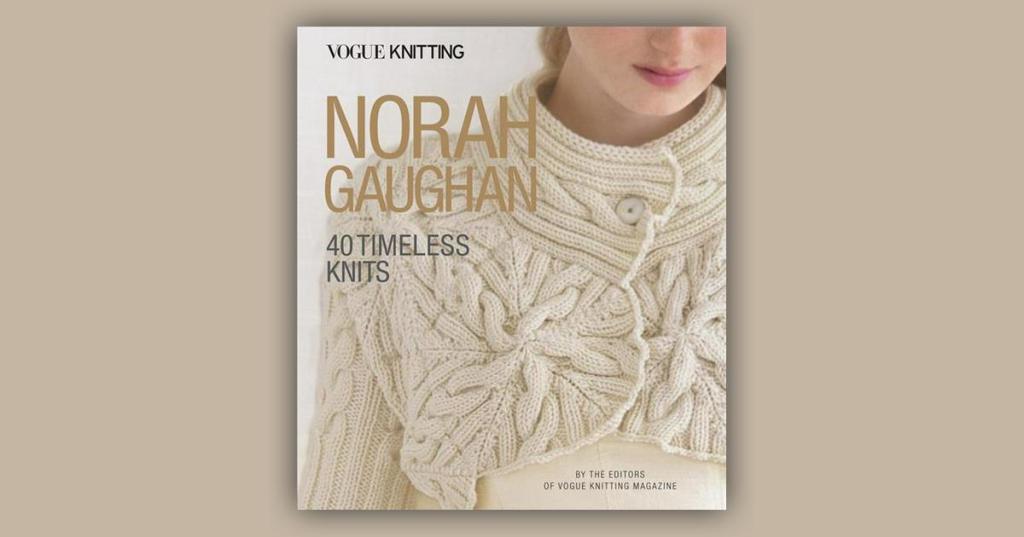
So for teaching me about 2×2, about more and less in knitting, and for her many gifts of great design, I say a hearty thank you to Norah Gaughan.
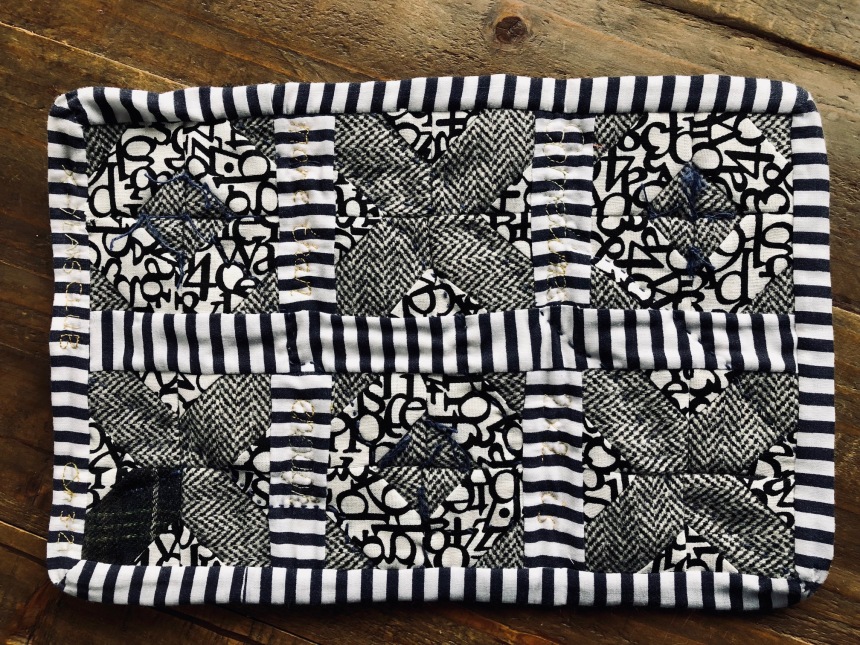
And I’d also like to thank Corinna, quilter, knitter, and 10 Years in the Making Club member, for her kind gift of this lovely mini-quilt, celebrating the simple principles of 2×2!

The pattern for Norah Gaughan’s cabled bolero / capecho features in Vogue Knitting’s Norah Gaughan: 40 Timeless Knits and is also available as a single download on Ravelry.

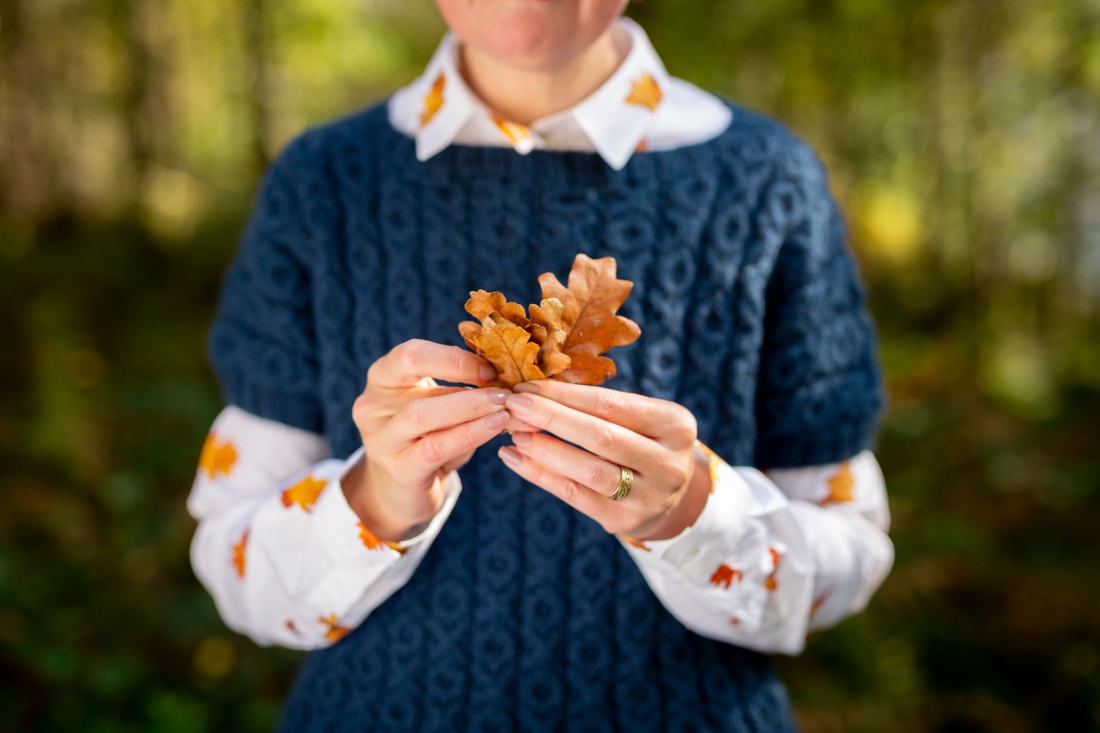
What a nice post! I really like reading it. I also bought the magazine attracted by the pattern but I’m still scared to knit it. Thank you for this essay maybe I looked at it as doable.
LikeLiked by 1 person
That was mind bending :) glad it was easy and didn’t tip you over the edge !!
LikeLike
I did the Owligan cardigan years ago for my sister before they embarked on a trip to Scotland. She loved it and found it so warm and cozy for your damp climate. She lives in Vancouver, B.C., Canada, where it is also damp so is still enjoying the sweater. I am thinking of knitting it up in a cozy Alpaca yarn for me.
LikeLiked by 1 person
I have knitted this Capcheo, I did the exact same thing as you Kate. Saw it in a magazine and had to try it out even though I would never wear it.(Big boobs are not right for this pattern) Just interested in the pattern. It is the garment I have made that looks the most difficult but was actually a breeze to make.
LikeLiked by 1 person
I also love Norah Gaughin’s work. There are few knitters so in touch with the process that they can transform it with a few stitches into something totally different. Gaughin is one, you are another and then of course Elizabeth Zimmerman. :)
LikeLiked by 1 person
that is very kind of you, Helen – august company indeed!
LikeLike
I, too, thought of Elizabeth Zimmerman — and her story of the development of the baby surprise jacket — after getting started on this post! It takes a special sort of geometrically mathematical intuition to create patterns like these. Even for those of us not so gifted, the construction of a piece with new and seemingly alarming techniques can be enormously satisfying. I will never forget the first time I read in Mary Thomas about Shetland shawls being constructed from only two stitches. I was about ten years old at the time, the only serious knitter in my immediate family, and had discovered the Thomas book at the back of a shelf in the library. The idea that I might cobble together a sock pattern from my own measurements and eventually make one of those astonishing shawls took root right then. Hooked for life!
LikeLiked by 1 person
I am a huge fan of the oxo cable pattern and have two cardies with it on. And I have Norah Gaughan’s book Knitting Nature book, which I keep promising to knit something from but mainly just love looking at it. Your oxo pattern is on the list to knit but I may change it as I like a twist between the rows of oxo. The capecho reminds me of eighteenth century women’s over wear, it’s lovely.
LikeLiked by 1 person
I love watching and learning about favourite designers’ creative journeys. Sometimes I look at their designs in chronological order (as much as is possible while recognizing that a design may be released somewhat out of chronological order). It interests me to watch what brains do with ideas. I can get a bit obsessed with the evolution of ideas.
Good grief, that sounds a little weird…
LikeLike
It’s amazing how something so simple can make something beautifully complex looking! Which reminds me, I’ve had your Owls pattern in my library since it was first released! I’ve got to go stash diving for suitable yarn for it.
LikeLiked by 1 person
I have admired Norah’s designs but never attempted one. It’s interesting that you don’t find them that difficult Kate. Also I think they probably look better on tall thin people (which I am definitely not!). But the architecture of her designs is mesmerising.
LikeLiked by 1 person
i’m not so good in calculations, but 2×2=magic
LikeLiked by 1 person
Love this! Ever since I saw the Tree Tram Tro design I’ve been wanting to knit a hugs and kisses sweater. :-)
LikeLiked by 1 person